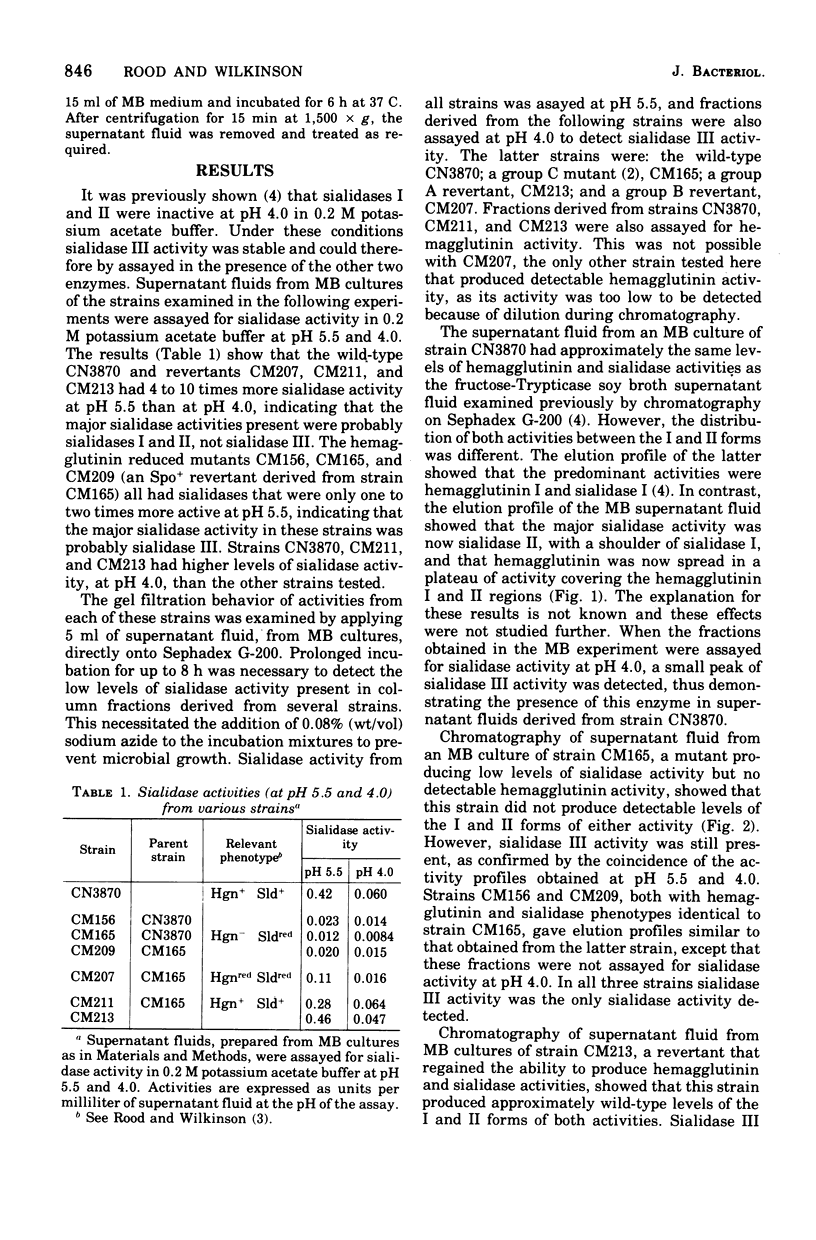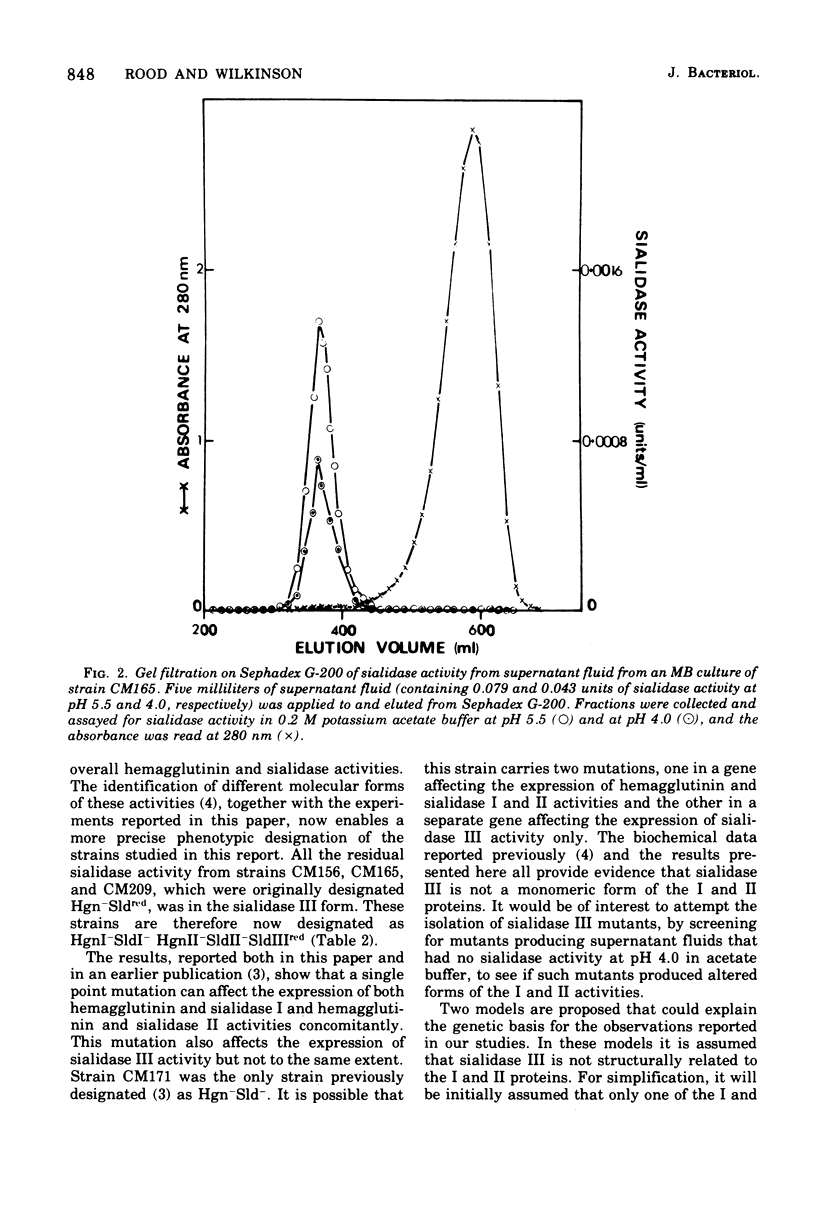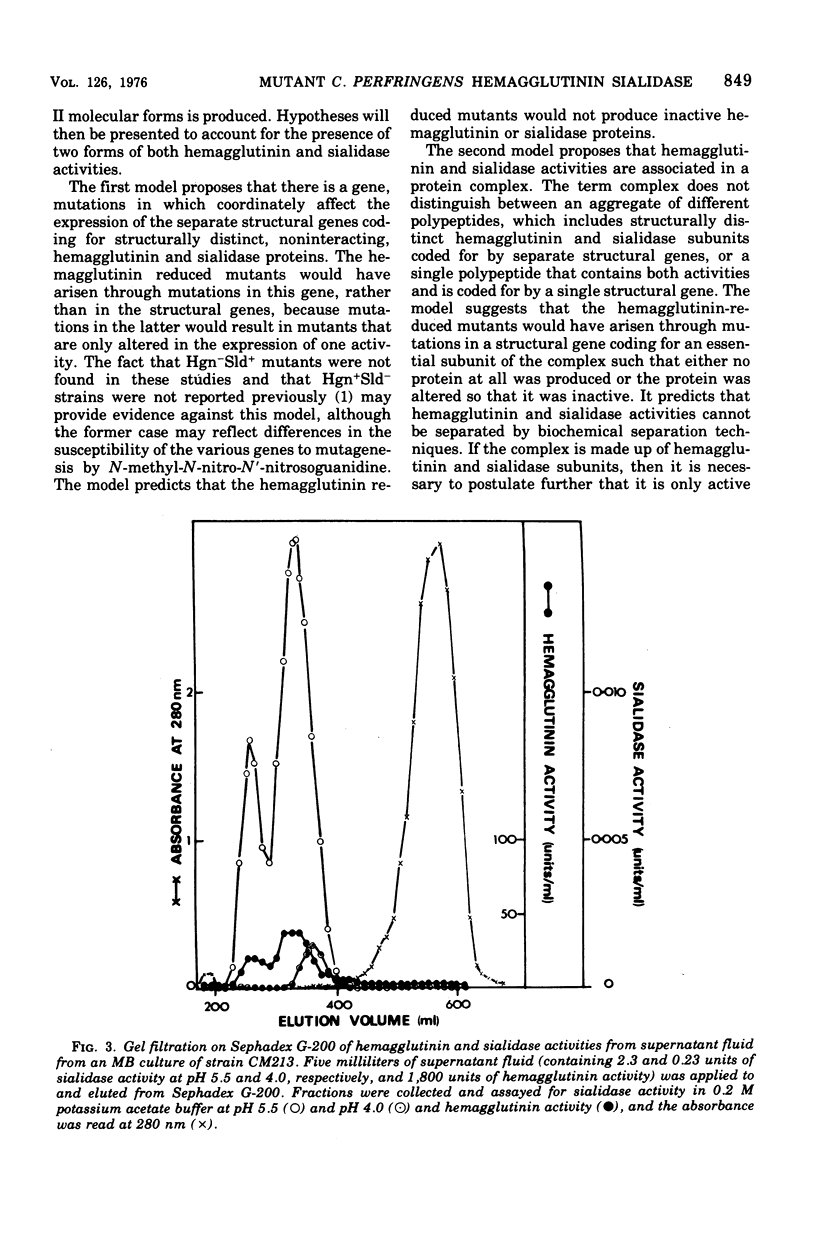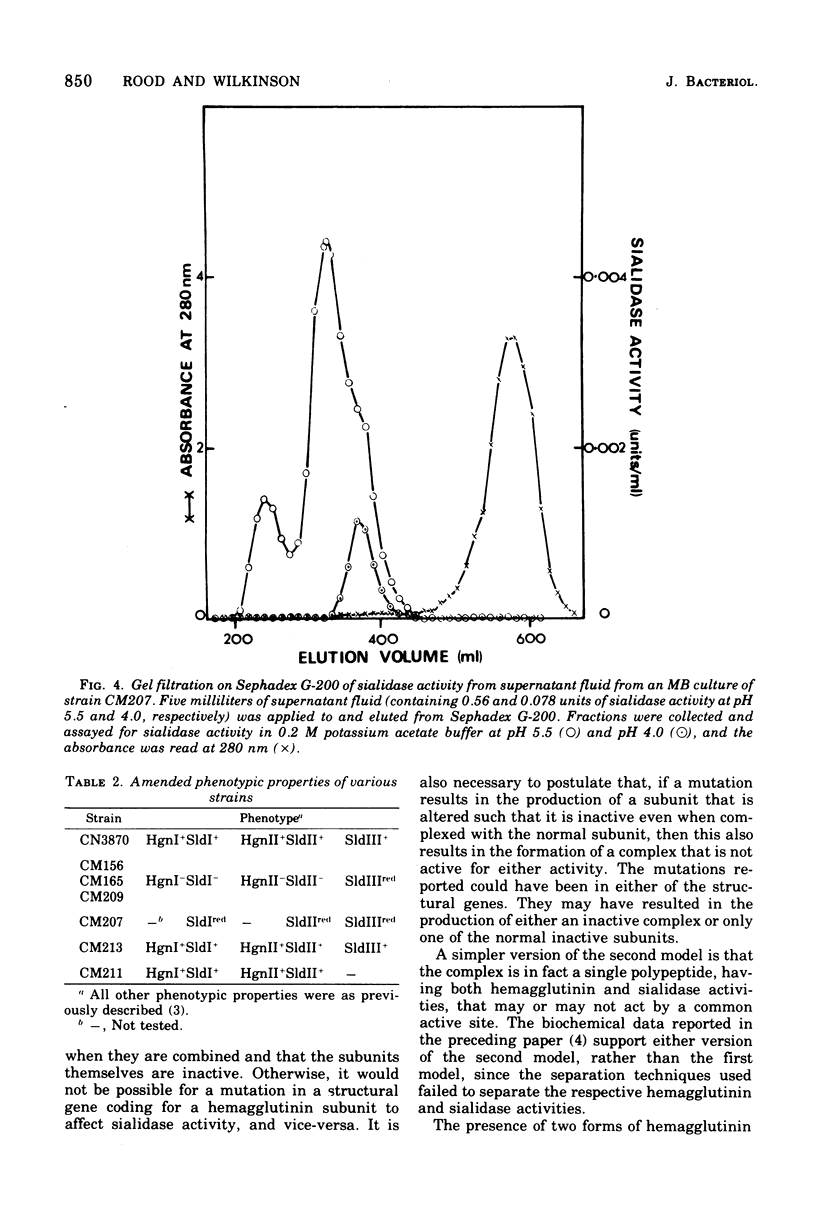Abstract
Gel filtration of supernatant fluids, from the wild-type Clostridium perfringens, strain CN3870, and several of the mutants and reverants derived from this strain, showed that these mutants failed to product detectable amounts of still produced sialidase III activity. The reverants tested had regained the ability to produce approximately wild-type levels of the I and II forms of both activities. These results showthat there is a direct relationship between the production of the I form and hemagglutinin and sialidase activities and the production of the II form of these biologically active proteins. Models that explain the genetic basis for these results are discussed.
Full text
PDF






Selected References
These references are in PubMed. This may not be the complete list of references from this article.
- Collee J. G. The relationship of the haemagglutinin of Clostridium welchii to the neuraminidase and other soluble products of the organism. J Pathol Bacteriol. 1965 Jul;90(1):13–30. doi: 10.1002/path.1700900103. [DOI] [PubMed] [Google Scholar]
- Rood J. I., Wilkinson R. G. Isolation and characterization of Clostridium perfringens mutants altered in both hemagglutinin and sialidase production. J Bacteriol. 1975 Aug;123(2):419–427. doi: 10.1128/jb.123.2.419-427.1975. [DOI] [PMC free article] [PubMed] [Google Scholar]
- Rood J. I., Wilkinson R. G. Relationship between hemagglutinin and sialidase from Clostridium perfringens CN3870: chromatographic characterization of the biologically active proteins. J Bacteriol. 1976 May;126(2):831–844. doi: 10.1128/jb.126.2.831-844.1976. [DOI] [PMC free article] [PubMed] [Google Scholar]


